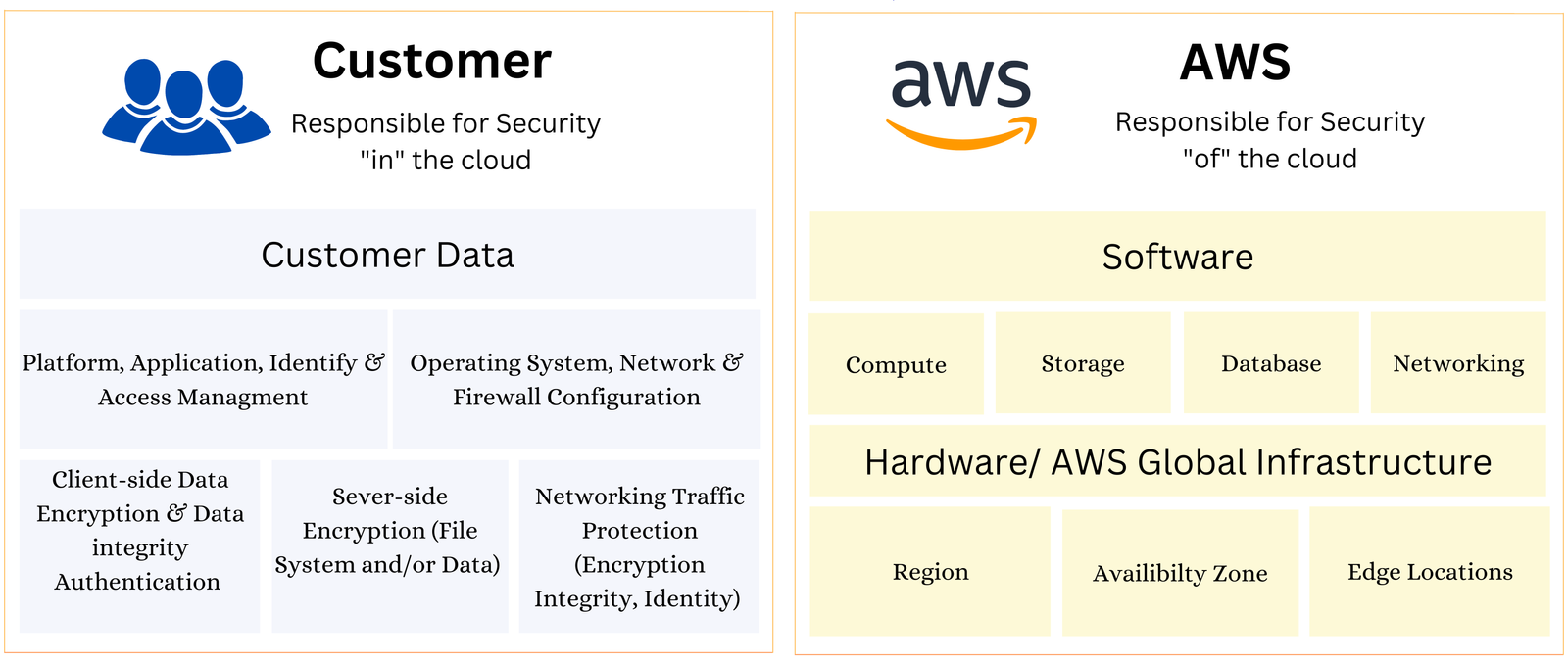The Shared Responsibility Model is a structure for cloud security that describes the responsibilities of cloud service providers and consumers. Cloud provider offers to consumers a range of cloud services such as computing, virtual private network, database storage, content delivery, etc. Cloud provider offers the service and consumers makes advantage of it.
According to AWS Shared Responsibility Model, “AWS is responsible for the Security of the Cloud and the customer is responsible for the Security in the Cloud”. Cloud providers and consumers both share some responsibilities, the cloud provider is responsible for the service provided, and the consumers are responsible for the service usage.
Organizations’ primary issue is an unclear understanding of their roles, which can compromise security. According to several studies, incorrectly shared security responsibilities were to blame for several security incidents. This uncertainty allows hackers a blind spot to attack. As a result, Amazon Web Service (AWS) created the AWS Shared Responsibility Model to define roles.
AWS responsibilities vs Customer responsibilities

AWS Responsibilities (Securities of the cloud)
AWS is in charge of securing the infrastructure that runs all of the services provided by the AWS Cloud. AWS Infrastructure-level security includes- Data centers, Hardware, software, Virtualization, and Networking.
Customer Responsibility (Securities in the cloud)
Customers are responsible to manage the guest operating system, including security patches and application software. Also, they need to configure the AWS-provided security controls like security groups, network access control, and IAM (Identity and Access Management). Or the customer manages AWS services, software, and access to the data.
